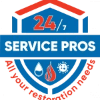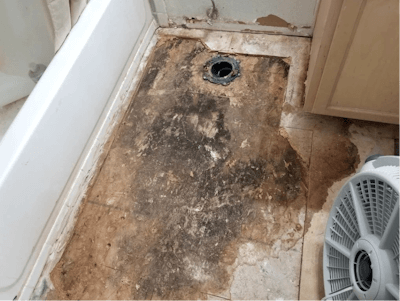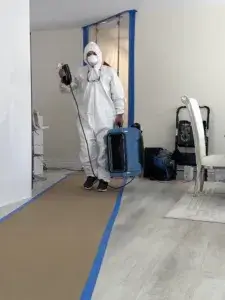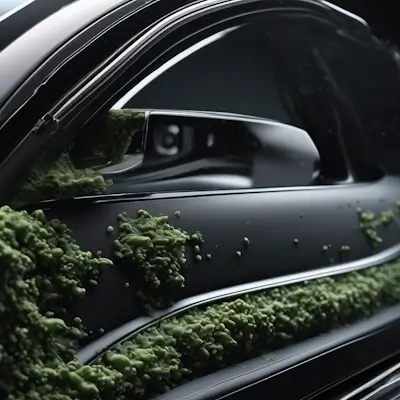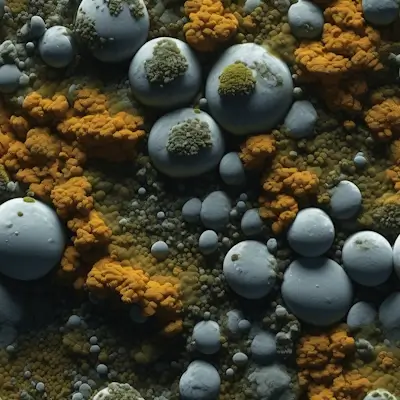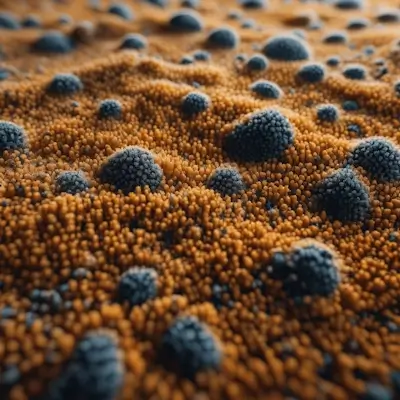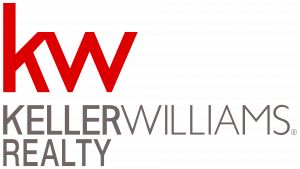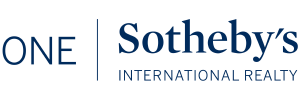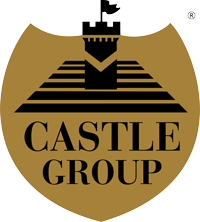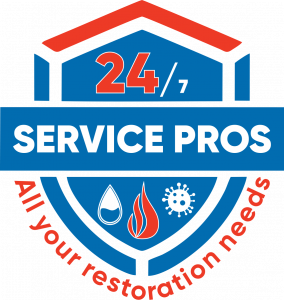Mold, a form of fungi, thrives in damp areas like bathrooms or near leaking roofs. It reproduces through microscopic spores that disperse through the air, lying dormant until they find a suitable environment for growth.
When a home undergoes significant water damage, it creates an ideal environment for these spores. The increased moisture levels provide perfect conditions for mold growth, significantly increasing the likelihood of a mold infestation.
Therefore, addressing water damage promptly is crucial to preventing mold establishment and spread.
How Do You Ensure No Mold After Water Damage?
To prevent mold growth after water damage, immediate action is crucial. Begin by eliminating or draining the excess water. This step is vital as it reduces the moisture level, thereby minimizing the chances of mold proliferation.
If water damage has affected your flooring or carpeting, prioritize their removal. Damaged surfaces can harbor moisture, providing a conducive environment for mold growth. This is particularly true for floors with crevices, such as stone-tiled floors, where moisture can easily accumulate. By removing these surfaces, you eliminate potential breeding grounds for mold, significantly reducing the risk of an infestation.
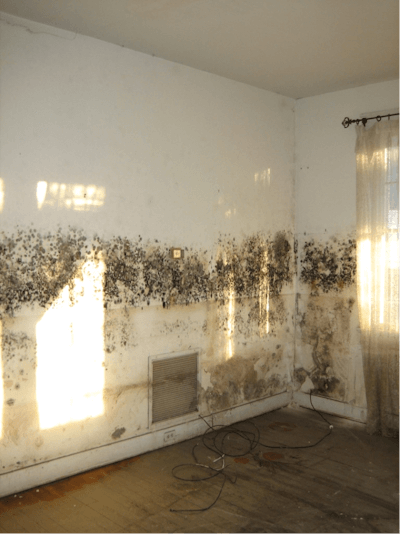
Six Tips for Mold Prevention After a Water Damage
- Act Swiftly: Mold and mildew growth can commence almost immediately after a flood. Therefore, it’s crucial to initiate the cleanup process without delay to prevent their proliferation.
- Promote Ventilation: A key step in mold prevention is to clean and dry out the home promptly. Enhance ventilation by opening windows and using fans and dehumidifiers. These measures expedite the drying process and reduce moisture levels, discouraging mold growth.
- Prioritize Personal Protection: During the cleanup, safeguard your health by wearing protective gear. This includes rubber gloves, eye protection, and a mask to prevent exposure to harmful mold spores.
- Choose the Correct Cleaning Solution: A solution of 350 ml of household bleach mixed with 4 liters of water can effectively wash and disinfect areas affected by mold.
- Consider Carpet Removal: Carpets soaked during a flood may need to be completely removed. Even if they appear dry, they could still harbor mold spores, posing a risk of future mold growth.
- Remove Uncleanable Materials: Some materials, such as wallboard, fiberglass, and cellulose areas, are porous and can’t be thoroughly cleaned. If these materials have been water-damaged, consider removing them to prevent mold infestation.
Tips for Mold Prevention | Details |
Prompt Action | Mold can start growing within 24-48 hours after water damage. |
Proper Ventilation | Keeping humidity levels below 60% can prevent mold growth. |
Regular Cleaning | Regular cleaning, especially in damp areas like bathrooms, can prevent mold. |
Use of Dehumidifiers | Dehumidifiers can help maintain low humidity levels, especially in damp climates. |
Fixing Leaks | Plumbing leaks should be fixed immediately to prevent moisture accumulation. |
What Kills Mold After a Water Damage?
Bleach is a common household product that is often used to eradicate mold after a flood. It’s a powerful disinfectant that can kill mold on non-porous surfaces. However, safety is paramount when using bleach for mold cleanup.
Ensure you’re wearing appropriate protective gear, including gloves, a mask, and goggles, to shield yourself from the harsh effects of bleach and mold spores. When preparing your bleach solution, a general rule of thumb is to mix no more than 1 cup of bleach with 1 gallon of water. This ratio ensures an effective yet safe concentration for mold cleanup.
If you’re using a professional-strength bleach, which is typically more concentrated, adjust the ratio accordingly. Use less than 1 cup of professional-strength bleach per gallon of water to maintain a safe and effective concentration.
Here’s a table of products that can kill Mold.
Mold Prevention Products | Purpose |
Bleach | Kills mold on non-porous surfaces |
Vinegar | Natural disinfectant that can kill most types of mold |
Borax | Natural mold inhibitor |
Ammonia | Effective on hard, non-porous surfaces |
Hydrogen Peroxide | Kills mold and can brighten stains |
How to Prevent Mold After Water Damage in Shower
Maintaining a regular cleaning routine is the cornerstone of preventing mold growth in your shower. Mold thrives in damp environments, and a shower is an ideal place. To combat this, it’s recommended to wipe down your shower walls after each use to remove excess moisture.
In addition to daily maintenance, a weekly deep clean can further ensure your bathroom remains mold-free. This involves a thorough cleaning of all surfaces, paying special attention to corners and crevices where mold is likely to grow.
For these deep cleans, consider using a homemade solution of equal parts white vinegar and water. Vinegar is a natural disinfectant that can effectively kill mold spores. Alternatively, a non-abrasive bathroom cleaner can also be used.
These measures, when implemented consistently, can significantly reduce the risk of mold growth after water damage in your shower.
How to Prevent Mold After Water Damage in Bathroom
The primary strategy to prevent mold growth in your bathroom revolves around controlling the humidity level. High humidity creates an ideal environment for mold, hence keeping it in check is crucial.
One effective method is the use of exhaust fans. These devices promote air circulation, reducing moisture and preventing mold growth. Regularly inspect your bathroom for leaks, as even a small leak can significantly increase humidity over time. If detected, fix them promptly to prevent water accumulation.
Running a dehumidifier can also be beneficial, especially in bathrooms without windows or in regions with high humidity. Dehumidifiers extract excess moisture from the air, maintaining an environment unsuitable for mold growth.
Lastly, simply opening your windows can aid in ventilation and moisture control. Natural airflow can help keep your bathroom dry and mold-free. Implementing these measures can significantly reduce the risk of mold development after water damage in your bathroom.
Conclusion: Concluding Everything That You Have Learnt So Far
Preventing mold after water damage is a critical task that requires immediate and meticulous attention. By following the guidelines and steps detailed in this article, you can ensure a safe and healthy environment in your home.
For further information and professional assistance, consider visiting 247servicepros.com. This platform offers expert advice and services tailored to your needs, ensuring you receive the best possible support in your mold prevention efforts.
However, this article is intended to provide general information. For advice specific to your circumstances, it is recommended to consult with a professional who can provide personalized guidance and solutions. Each situation is unique, and a professional can help you navigate your specific scenario effectively.
Remember, the key to mold prevention is prompt action and maintaining a dry environment. Regular cleaning, proper ventilation, and immediate attention to water leaks are some of the effective strategies to prevent mold growth.
Need Help with Mold Removal ? Areas we Serve
- Hollywood
- Davie
- Miami Beach
- Weston
- Hallandale Beach
- North Miami Beach
- Sunrise
- Tamarac
- Coconut Creek
- Fort Lauderdale
- Miami
- Boca Raton
- Hialeah
- Margate
- Pembrock Pines
- Dania Beach
- Lauderhill
- Delray Beach
- Pompano Beach
- Deerfield Beach
- Coral Springs
- Plantation
- Doral
- Aventura
- Miramar
- Sunny Isles Beach
